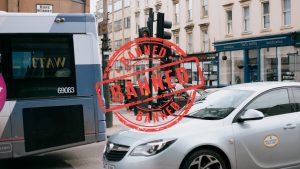Traffic Congestion is one of the main issues in many cities in the world. Even if city governors adopt some measures, Traffic congestion cannot be solved due to inefficiency actions.
Sitting in traffic congestion is costly, both in time and lost fuel. In our Global Traffic Scorecard, we estimate that congestion results in $81 billion, £9.5 billion, and €3.9 billion spent in lost time and fuel annually across the US, UK and Germany, respectfully, and many billions more when other countries are analyzed.
Traffic congestion occurs when a volume of traffic generates demand for space greater than the available street capacity; this point is commonly termed saturation. Several specific circumstances can cause or aggravate congestion; most of them reduce the capacity of a road at a given point or over a certain length, or increase the number of vehicles required for a given volume of people or goods.
About half of U.S. traffic congestion is recurring, and is attributed to sheer weight of traffic; most of the rest is attributed to traffic incidents, road work and weather events.
Here are 4 ways to reduce traffic congestion:
Restrict Parking Near Busy Intersections
Restricting parking near busy intersections is one way to help reduce traffic congestion. By reducing the number of cars on the road, you can also help to reduce pollution and save fuel.

This can be done by charging a higher fee for parking at these locations, or by making it only available for residents. If you live in an area with high traffic congestion, this is one way you can help make a difference.
Parking spaces should be placed strategically to allow for the free flow of traffic. They should also be located near public transportation so that people have the option to take the bus or train instead of driving. This can reduce congestion by taking cars off the road.
Adaptive Traffic Signals
Adaptive traffic signals are a crucial component of smart traffic management systems. These signals dynamically adjust based on real-time traffic data, prioritizing the smooth flow of vehicles and reducing unnecessary stops. By synchronizing signal timings intelligently, adaptive signals help alleviate congestion at intersections and main thoroughfares.
Respect the lanes to reduce Traffic Congestion
Remember that there is one lane to drive fast and another lane to drive at a more normal speed. If you drive very slowly along the left lane and other vehicles have to pass you to continue, you are causing vehicle congestion and accident hazard. If you prefer to drive slower, use the right or center lane.

Invest in Public Transportation
Providing more and better public transportation options can encourage people to leave their cars at home, which can help reduce the number of vehicles on the road. This could include investing in buses, trains, and other forms of mass transit, as well as making public transportation more affordable and convenient.
